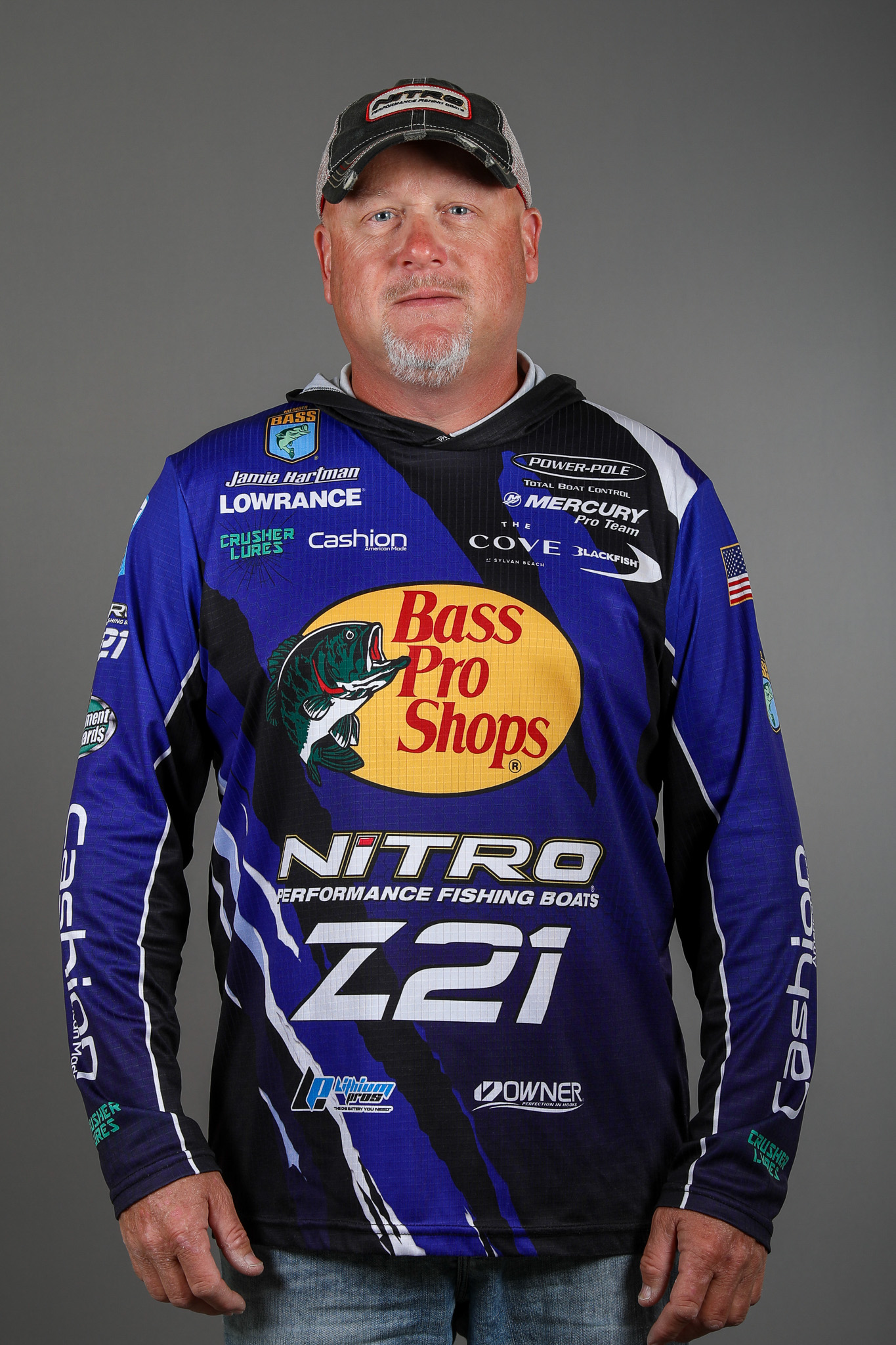
Spring means different things to different people, but for me, this is reaction bait time. A lot of times the water is still cold, and the fish are not in a feeding mode. They’re usually coming out of deeper water, and they’re very spooky.
So, when they’re staging to come into that shallower water, a reaction bait triggers an instinct bite. They think, “I have to eat that,” so they’ll react to a bait that’s more erratic. You’re playing on their instincts.
First and foremost for cold spring water is a jerkbait. I’ll throw a Luckycraft Pointer 78, 90 or 110 depending on location and fish size.
I usually fish jerkbaits on the drops. The outside grass lines is where they’ll stage up, but if there’s no grass, then I’d look outside of a point before a spawning cove or outside of a flat — like where a creek runs into a flat.
You can cover a lot of water to find fish with a jerkbait, but cadence is very important. You determine this by letting the fish tell you what they want. Start slow and gradually speed up. If it’s super cold, you just stay slow.
The fish’s preference will change throughout the day, so about every fifth cast, change cadence if you’re not getting bit. Once you figure it out, it’s a pattern and you can start running it all over the lake.
My next choice for a spring reaction bait would be a lipless crankbait. I’ll use this to target grass lines, but if you can find areas that are carpeted with grass, it’s even better. Again, cadence is important, but if you can get the bait hung in the grass and pull it out, get it hung and pull it out, that will trigger your reaction bites.
In areas that don’t have grass, but they have rock, let the bait sink to the bottom and then slow roll it across the bottom. Yo-yoing a lipless bait offers another effective spring presentation that works in open or over grass.
My third choice for spring reaction baits is a squarebill. This is more of a shallow deal where rock meets grass and if you can get it to bump bottom, even better. They’ll eat it over open water and over grass, but if you can get it to bump the tops of the grass or hard bottom, you’ll definitely get a better reaction bite.
My best tip for fishing a squarebill is to use a pause technique. When the bait bumps something, pause the bait, and a lot of times, they eat it right then. I do that a lot with a squarebill; I’ll crank it, crank it, crank it, bump something, kill it and then slowly start it again. That’s when they eat it.
A lot of times, I’m rolling down the bank with a lipless and a squarebill on my deck, and I’ll pick one or the other based on what’s in front of me. As the morning heats up, I typically expect the squarebill to become more prominent because those fish will be moving up shallower.
With all of these prespawn baits, the key is remaining aware of the spawning areas. Stay outside of where you know fish will be moving to spawn and you’ll be more likely to find more numbers of fish.

